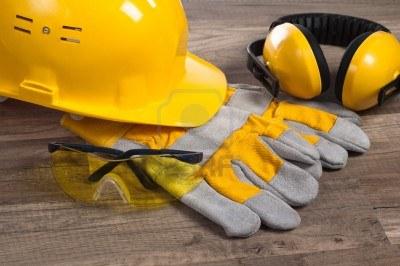According to the U.S. Department of Labor’s Occupational Safety and Health Administration, roughly 150,000 jobsite injuries occur nationwide each year. It is important to start a project with safety being a part of every employee’s job description. Why? Because construction safety strengthens your workers’ security, it keeps your projects on schedule and it improves the reputation of your organization. Embracing construction job safety must be a priority, a collective effort that includes everyone from the superintendent or manager to laborers and vendors. Take a look at some of tips you must take to make your jobsite safe:
Educate Employees Year Round on Safety Procedures
It is important that everyone is trained around construction safety before setting foot on the site. Knowledge of OSHA regulations, equipment operation, and emergency plans make your jobsite safe. For example, plan a 3 hour safety meeting for new workers where you review safety requirements, emergency procedures and disciplinary actions, and stick to it for every project you work on.
Constant Job Walks
One of the first things to do to make your jobsite safe is to walk the construction area before you start operations. Job walks allow you to identify potential hazards, dangers and weaknesses, and help you plan how to properly handle them. You should take a walk every single day during the project to make sure that you know every change that has taken place. From weather conditions to human negligence things change- and failing to recognize that may have negative consequences.
Provide Personal Protective Equipment to all Employees
Employers are supposed to provide their workers with proper protective gear and clothing. Protective equipment may include: hard hats, safety goggles and boots, work gloves, ear plugs (or another form of protection) and face masks.
Keep First Aid Close
While it may not be possible for workers to carry first aid supplies with them all the time, both the site supervisor and contractor should ensure that first aid is always accessible to the workers. Basic first aid for minor burns, cuts, and falls should be available on site so that the required medical assistance can be provided to the workers immediately. This is beneficial to the employer, as well, because this ensures that after resting for some time, the worker can return to his work as soon as possible.
Signage
Proper signage is necessary to keep the general public and workers safe. The signage should label areas that can be hazardous, exit signs, barring tapes and clear directions to the main office. Proper signage also prevents visitors from wandering around the site and injuring themselves, which could trigger a third party claim.


